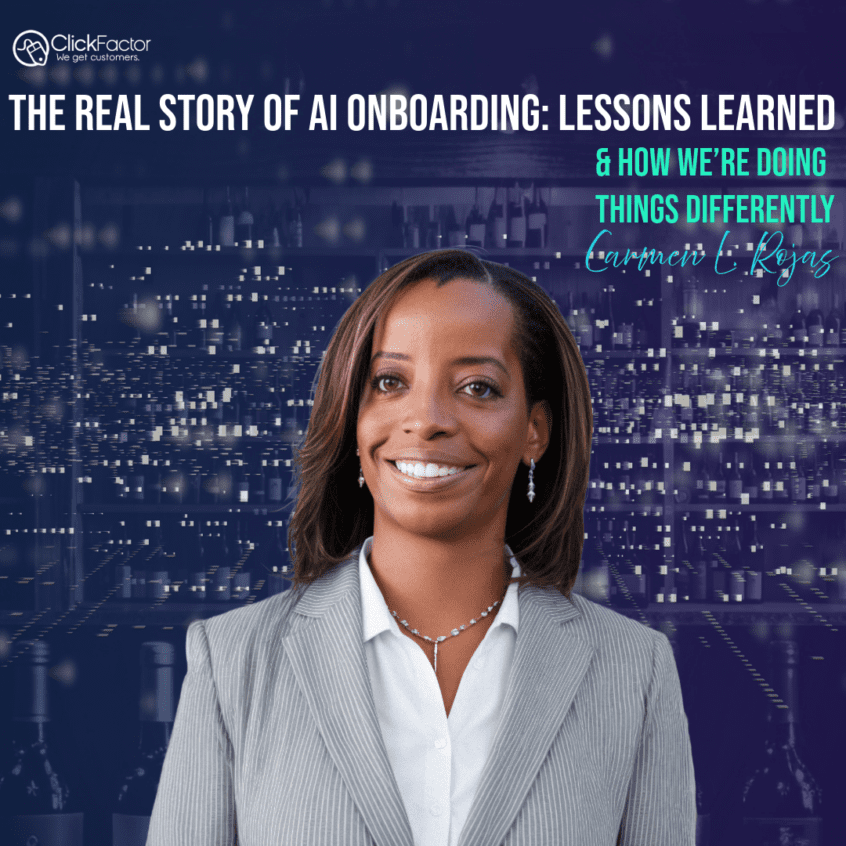
The Excitement of Getting Started
When we first started our BetaTest of AI solutions, there was a lot of enthusiasm. We were excited to go beyond the classroom and implement a fully functioning AI Voice Agent. The idea was to create an AI assistant handle customer inquiries and support seemed like a no-brainer. The client was excited, and we were excited and ready to Go, Go, GO! But looking back, we underestimated the importance of a well-structured onboarding process—and that’s where the real lessons began.
The Reality of AI Implementation
Like many rookie AI solution companies, we believed we could easily get quick results. We imagined an AI voice agent that could seamlessly answer customer inquiries, provide cart recovery assistance, and even drive sales based on a scrape of the website and a few email exchanges. But AI isn’t a plug-and-play solution. It requires thoughtful onboarding, training, and a real commitment to integration to achieve its full potential.
With the clients blessing, we stormed out of the gates, implementing an inbound voice AI assistant designed to answer basic FAQs and product questions. However, we soon encountered challenges that we now recognize as opportunities to improve our process:
✅ System Limitations: The AI couldn’t transfer calls to a live agent due to existing call system constraints.
✅ Overly Ambitious Development: We moved too fast, made huge leaps in feature complexity while overlooking the importance of key structures.
✅ Missed Optimization Opportunities: With more time for structured onboarding, the AI could have been more than just a support tool—it could have been a powerful sales driver.
What We Learned: A Better Approach to Onboarding
- Defining Clear Goals from the Start
- Instead of jumping straight into development, we now dedicate more time aligning on expectations, use cases, and success metrics.
- Allowing Time for Testing & Refinement
- AI systems improve with feedback and iteration. We now incorporate longer testing phases to analyze call data and refine AI responses.
- Ensuring Full Collaboration
- Successful AI projects require active participation from all stakeholders. Moving forward, we ensure that AI is treated as a collaborative effort rather than a set-it-and-forget-it tool.
The Results: We won many battles, but did we win the war?
While the initial implementation led to: 🚀 Increased customer engagement with automated voice support for basic inquiries. 🚀 Improved self-service efficiency, reducing the burden on human customer support. 🚀 Limited direct sales impact, as key selling features were not fully implemented.
We now recognize that structured onboarding and iterative improvements are critical to ensuring AI reaches its full potential.
How We’re Doing Things Differently
- We no longer rush AI deployment—instead, we emphasize testing and refinement.
- We prioritize collaboration to ensure all features are aligned with real business needs.
- We set clear expectations upfront so that AI is implemented as a long-term solution rather than a quick fix.
Setting Transparent Expectations for AI Onboarding
One of the biggest lessons we’ve learned is that a well-structured onboarding process is key to AI success. Here’s what new clients should expect when working with us:
⏳ How Long Does Onboarding Take?
- On average, a successful AI onboarding process takes 6 to 8 weeks.
- This includes discovery, system integration, AI training, testing, and refinement.
- Rushing this process can lead to inefficiencies and missed opportunities.
📝 Key Questions Clients Should Be Prepared to Answer:
- What are the specific goals of your AI implementation? (Customer support, sales recovery, lead qualification, etc.)
- What are your current pain points, and where does AI fit into solving them?
- How will AI integrate with existing systems like CRM, call systems, or email automation?
- What are the most common customer questions and objections that AI should handle?
⚠️ What Happens When Steps Are Skipped?
- 🔴 Unclear Goals → AI is implemented but doesn’t effectively address business needs.
- 🔴 Lack of Testing → AI struggles with accuracy, leading to poor customer experiences.
- 🔴 Minimal Collaboration → Key features that could drive revenue get overlooked.
By taking the time to properly onboard, we ensure that AI isn’t just another tool—it’s a strategic asset that helps businesses grow.
The Next Phase of AI for E-Commerce
AI voice agents have the potential to revolutionize customer engagement and sales recovery. But to maximize impact, businesses must be willing to invest the time and effort into proper onboarding.
With an all-in approach to onboarding, AI can be more than just a support tool—it can be a key revenue driver.
🚀 Want to see how AI-powered voice agents can increase your sales? 📩 Download the full case study here!

